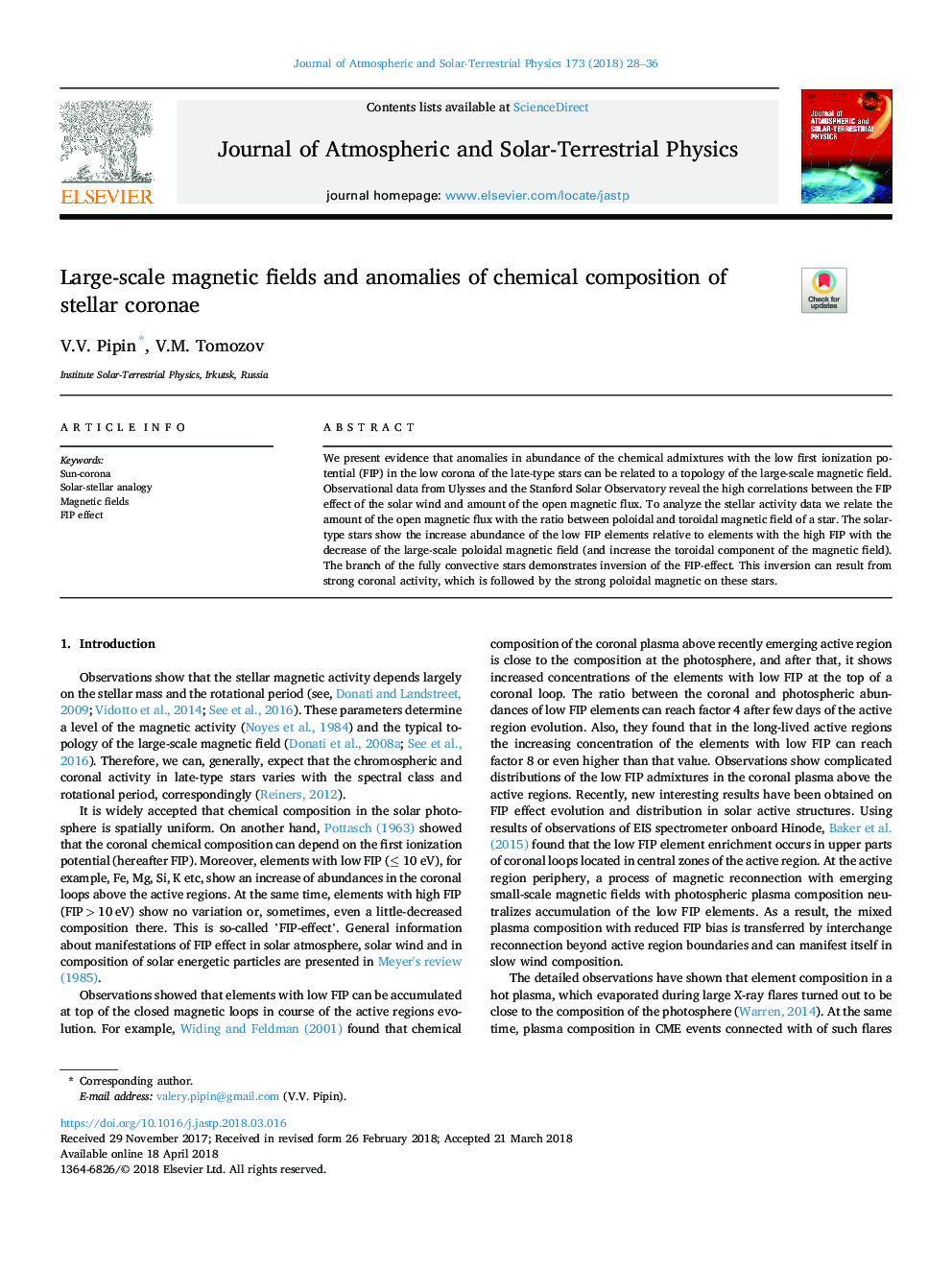| Article ID | Journal | Published Year | Pages | File Type |
|---|---|---|---|---|
| 8139297 | Journal of Atmospheric and Solar-Terrestrial Physics | 2018 | 9 Pages |
Abstract
We present evidence that anomalies in abundance of the chemical admixtures with the low first ionization potential (FIP) in the low corona of the late-type stars can be related to a topology of the large-scale magnetic field. Observational data from Ulysses and the Stanford Solar Observatory reveal the high correlations between the FIP effect of the solar wind and amount of the open magnetic flux. To analyze the stellar activity data we relate the amount of the open magnetic flux with the ratio between poloidal and toroidal magnetic field of a star. The solar-type stars show the increase abundance of the low FIP elements relative to elements with the high FIP with the decrease of the large-scale poloidal magnetic field (and increase the toroidal component of the magnetic field). The branch of the fully convective stars demonstrates inversion of the FIP-effect. This inversion can result from strong coronal activity, which is followed by the strong poloidal magnetic on these stars.
Keywords
Related Topics
Physical Sciences and Engineering
Earth and Planetary Sciences
Geophysics
Authors
V.V. Pipin, V.M. Tomozov,
